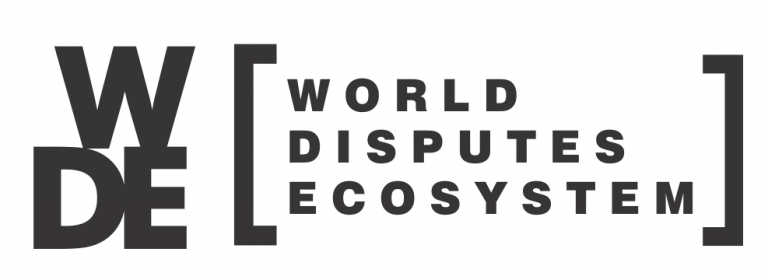[vc_row row_type=”row” use_row_as_full_screen_section=”no” type=”full_width” angled_section=”no” text_align=”left” background_image_as_pattern=”without_pattern” padding_bottom=”80″ css_animation=””][vc_column][vc_row_inner row_type=”row” type=”full_width” text_align=”left” css_animation=””][vc_column_inner][vc_column_text]In the United States, lawyers and the local and state bar associations, as well as the American Bar Association and the Federal Bar Association, were as enthusiastic as the judges in their promotion and utilization of mediation. American lawyers understood that the legal system was overloaded and on the point of collapse from the courts being wrongly utilized for disputes that could be better and more efficiently handled by mediation and other ADR procedures. By the mid-1980’s, lawyers and State Bar Associations had professionalized mediation in the US, by developing mediator training standards, by providing lawyer training in mediation and by prescribing ethical standards for lawyers when acting as mediators and when acting as advocates in mediation. As a result, trained lawyer mediators made mediation a substantial part of their law practice. By responding positively and emphatically to incorporate mediation as a welcome and useful ADR tool in the American legal system, lawyers have not lost business to mediation, but have rather become ensconced as mediators and as the gatekeepers for mediation in the US legal systems. In the US, although lawyers initially felt threatened by mediation and resisted it as an unwanted change in the status quo, the lawyers quickly realized that mediation was just another tool in their lawyer tool bag.
In India, while judges have been quick to recognize increased use of mediation as a helpful mechanism for reducing case backlogs and delays, Indian lawyers have not rushed to embrace mediation. As with American lawyers in the early 1980’s, Indian lawyers are conservative. They do not like change and are reluctant to expose their clients to the uncertain risks of an unknown ADR process. Also, understandably, Indian lawyers view mediation as potentially depriving them of income by settling cases prematurely and thereby obviating legal fees that would otherwise be earned. The same has been true for American lawyers during the growth of mediation in the US over the last twenty (20) years. In the first place, by their early acceptance and use of mediation, lawyers became not only the best trained and most qualified mediators (incorporating their mediator work into their law practices), but the lawyers who did not become mediators became the gatekeepers for mediation, selecting over 80% of the cases that are mediated and choosing the mediators for such cases.
Private litigants, too, may harbour anxiety about mediation as an alternative to the court system. Fearful of exploitation, distrustful of private proceedings, comforted by the familiarity of the court system, insecure about making decisions about their own interests, or interested in vexatious litigation or in delaying the case for economic reasons, some litigants may prefer the lawyer-dominated, public, formal, and evaluative judicial process.
These impressions are inaccurate for a variety of reasons. First, mediation will not frustrate the preferences of such litigants; indeed, their right to trial will be preserved. An effective mediation process can quickly allay these fears. Litigants involved in the process are much less likely to be exploited. They will quickly understand that the mediator has no power or social control over them or their resolution of the dispute. Second, effective facilitators will gain their trust over time. Third, if the parties still feel the need for an evaluation of the legal issues, the mediation can be accordingly designed to deliver that service. At times, litigants can better save face with members of their family, community, or organization, if they can cast responsibility for the result on a neutral third party, and for this group, a strong evaluative process may be appropriate. While judges and the courts provided the initial impetus toward mediation in the United States, it was the lawyers’ and law schools’ acceptance of the court’s challenge to find better ways of resolving disputes that lead to rapid and widespread acceptance of mediation in the United States. Globally, however, the explosion of mediation in Europe and in Asia is being spearheaded by corporations, as multi-national corporations (“MNC’s”) seek quicker, cheaper and less disruptive means for settling internal employer, management and shareholder disputes and external commercial disputes with trade and distribution partners around the world. At the first annual European Business Mediation Congress convened October 21-23, 2004 by CPR Institute of Dispute Resolution, 140 attendees (including representatives from most of the world’s largest law firms) responded to a Survey on European Business Mediation indicating that 60% viewed MNC’s as necessarily leading the charge in globalization of mediation, while, 25% viewed lawyers as the leaders, and only 7% viewed courts as the leaders in mediation on the international commercial scene. Now that major corporate clients have discovered mediation and are pushing for it, lawyers who resist the increased use of mediation in India will likely lose credibility with existing or potential MNC clientele. Once it is understood that mediation is intended to complement (not replace) the judicial process, that it is highly adaptable to different contexts, and that expertise in India is already growing rapidly, the apprehensions may quickly dissipate.[/vc_column_text][/vc_column_inner][/vc_row_inner][/vc_column][/vc_row]




